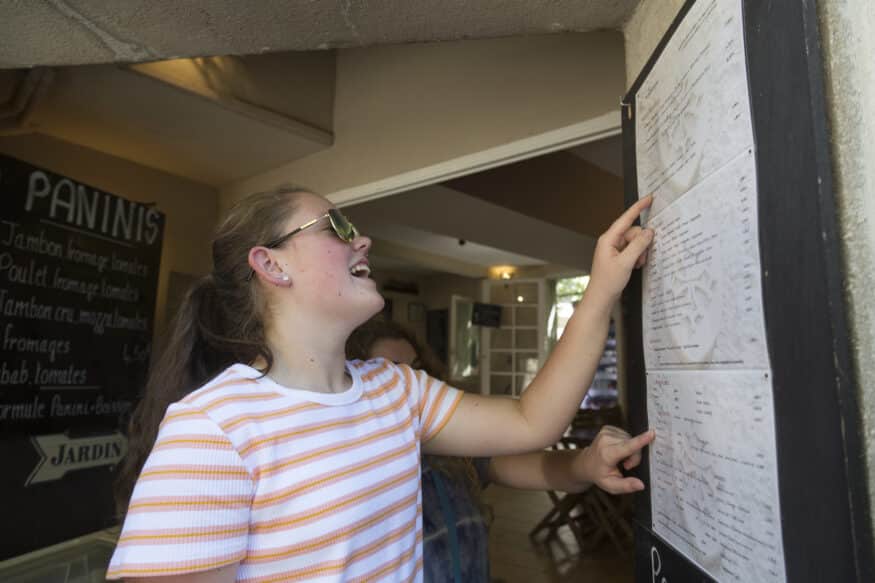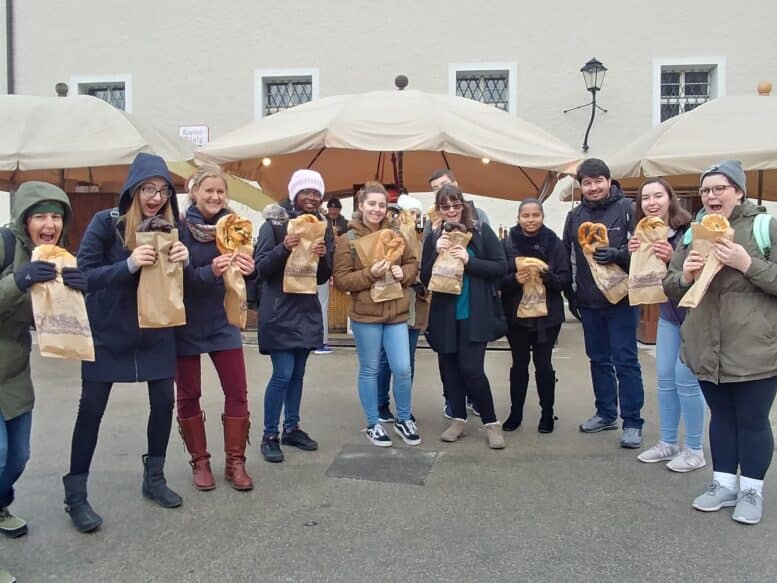8 Helpful Tips for Traveling to Europe

Made up of 44 countries on the continent, Europe is a bucket-list destination for many travelers. While each of those countries will have variations in language, culture, and social norms, there are some key ways you can prepare for your trip in general. Our team of experienced travel experts has put together 8 top travel tips for Europe that will enhance your experience overseas.
1. Prepare for Lots of Walking
Compared to the USA, European cities are more walkable, and you’ll find you’ve traveled miles on foot by the end of a tour day. Be sure to wear comfortable shoes that have support and wear any newly purchased pairs at least a few times before departure. It may sound silly, but we also recommend doing practice walks around your local area to get ready for long hours on your feet.
2. Embrace Public Transportation
When not walking, you will also find much of Europe connected by public transit. Bus and train systems connect cities, countries and regions that you can use to your advantage by planning out accessible day trips. In the city, instead of taking taxis or ubers, we recommend getting the full spirit of local life and taking the metro (the U-Bahn, the London Tube etc.), trams, boats – really any available public transit systems! It’s an efficient and cost-effective way to get around and gives you a break from going solely on foot. An ACIS Tour includes all modes of public transportation, in Europe and beyond, so you can explore more without reaching for your wallet.
“I can’t tell you the number of times I’ve taken students on their very first train or metro ride — something that in Europe is an essential way of life can seem like a terrifying prospect to many US teenagers. Mastering the Paris or London underground systems can be one of the most satisfying lessons for students and is hugely empowering.”
— Flora Blanco, ACIS Tour Manager

3. Pack Light, Travel Smart
If you’re planning a European tour, you’re likely going to be spending time in more than one city, and it’s stressful to transport heavy baggage between destinations. Our advice is to pack only what you need and plan ahead with layers, comfortable shoes, and an easily foldable raincoat. See if you can fit everything in a carry-on sized bag, which will save you both any baggage fees and the headache of the airline potentially losing checked luggage. You’ll be grateful you didn’t overpack when you’re wheeling your bag down cobblestone streets from the 14th century!
Check out our full list of packing tips for international travel
4. Learn Key Phrases from the Local Languages
As mentioned, there are many languages spoken across Europe, and while it would be nice to be fluent in all of them, it’s not a very realistic pre-departure goal. Instead, map out the destinations you are traveling to, and try to learn key phrases in the most common language spoken. Some basic phrases you will want to be sure to have on hand include:
- “Hello” and “goodbye”
- “Please” and “thank you”
- “I would like to order….”
- “Where is the restroom?”
- “How much is it?”
There are apps like Duolingo that can help you master these basic phrases, as well as podcasts designed for language learners.
Download Free ACIS Visual Vocabulary Guides

5. Research Customs and Norms
In addition to learning the languages of your European destinations, it’s also a good idea to brush up on varying customs and social norms.
For example, did you know that it is not customary to tip at restaurants? Service wages provide enough income stability that tipping is not the norm in Europe. If you had truly excellent service and want to leave some Euro coins behind, it will be appreciated but not required.
Another example: Shops and restaurants in Spain usually close for an afternoon siesta or “midday rest” between 2-5 pm, so you’ll want to be sure to have a snack packed for later in the day.
And there are smaller differences that may be harder to research but still part of the learning experience abroad. FYI: It’s considered strange to drink a cappuccino in the afternoon in Italy. Lessons learned from an ACIS staff member!
6. Try Local Cuisine
There’s no point in traveling if you’re going to eat the exact same way you do at home! Going to Europe is an opportunity to try foods and flavors that are truly unique. You’ll see certain specialty products that have “Protected Designation of Origin” status, meaning they come from a specific region and nowhere else. Prosciutto di Parma, Champagne, Camembert de Normandie, and Asiago are just a few examples you will find across Europe, and you’ll want to take advantage of trying them while in their destination of origin.
The slow food movement is also ingrained in many countries, such as Italy, Spain and France. Ingredients come farm-to-table and there is an emphasis on enjoying the meal at a slower pace. You may also find dinners are later in the evening, so don’t be surprised when you see diners sitting down at 9 or 10 at night. Don’t worry: On an ACIS Tour, you’ll be eating earlier!

7. Plan Around Cultural Events
With so much history, Europe has no shortage of traditions, some extending back to antiquity. When organizing your trip, research any festivals and holiday celebrations you might be able to observe. For fans of chocolate, Italy hosts the annual Eurochocolate festival in Perugia, home of the Baci brand. Anyone searching for color and excitement should plan a visit in March to see the world-famous Las Fallas parades in Valencia, Spain. And of course, the holiday season in December is chock-full of special celebrations, from Sweden’s annual Yule Goat to the alpine tradition of Krampusnacht.
8. Consider the Off Season
In direct contrast to travel tip #7, you may also consider traveling to Europe when there are not peak holidays and celebrations. Traveling in early winter or late fall is a good way to save money and avoid the crowds that come during summer and the holiday season. You may feel less like a tourist as you find emptier streets and fewer lines.
Important to remember: Many families in Europe take time off in the month of August, so don’t be surprised to find shuttered doors on local businesses during that time.
Travel to Europe with Your Students
Looking to use these travel tips for Europe to plan an educational tour to Europe? ACIS Tours can help! With a dedicated team of experienced travelers, we can custom-build your European adventure to include history, culture, and plenty of good food. You’ll stay in centrally located hotels to save on commuting time, travel with the best Tour Managers in the industry, and access 24/7 support out on the road. Get started by giving us a call or download our 101 guide to planning an educational tour below.










